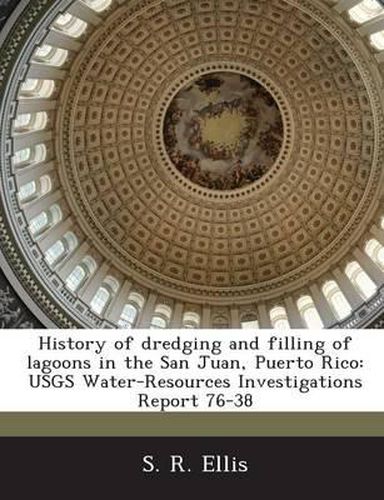Readings Newsletter
Become a Readings Member to make your shopping experience even easier.
Sign in or sign up for free!
You’re not far away from qualifying for FREE standard shipping within Australia
You’ve qualified for FREE standard shipping within Australia
The cart is loading…






Laguna La Torrecilla, Laguna de Pinones, Laguna San Jose, and Laguna del Condado, in the San Juan, Puerto Rico area, are located within a metropolitan area of more than 1 million people. Bathymetric maps made during the study, in 1973, showed that Lagunas La Torrecilla, San Jose, and del Condado have been modified by dredging and filling; whereas, Laguna de Pinones has remained in a near natural state. Laguna La Torrecilla has been dredged to a depth, in places, of about 18 meters, and Lagunas San Jose and del Condado, in places to about 11 meters. Dredging in the San Juan lagoons has been harmful, beneficial, and in a few instances has had little or no noticeable effect on the water quality. Usually, dredging in the connecting canals has been beneficial if the water entering the lagoons through the canals was of better quality than the water in the lagoon. Dredging in the mouths of lagoons has been beneficial; whereas, filling or blocking the mouths has been harmful. (Woodard-USGS)
$9.00 standard shipping within Australia
FREE standard shipping within Australia for orders over $100.00
Express & International shipping calculated at checkout
Laguna La Torrecilla, Laguna de Pinones, Laguna San Jose, and Laguna del Condado, in the San Juan, Puerto Rico area, are located within a metropolitan area of more than 1 million people. Bathymetric maps made during the study, in 1973, showed that Lagunas La Torrecilla, San Jose, and del Condado have been modified by dredging and filling; whereas, Laguna de Pinones has remained in a near natural state. Laguna La Torrecilla has been dredged to a depth, in places, of about 18 meters, and Lagunas San Jose and del Condado, in places to about 11 meters. Dredging in the San Juan lagoons has been harmful, beneficial, and in a few instances has had little or no noticeable effect on the water quality. Usually, dredging in the connecting canals has been beneficial if the water entering the lagoons through the canals was of better quality than the water in the lagoon. Dredging in the mouths of lagoons has been beneficial; whereas, filling or blocking the mouths has been harmful. (Woodard-USGS)